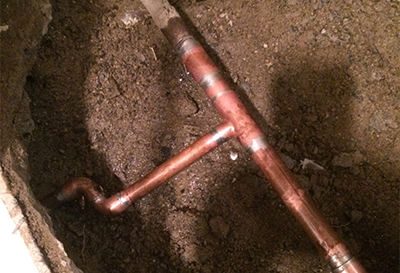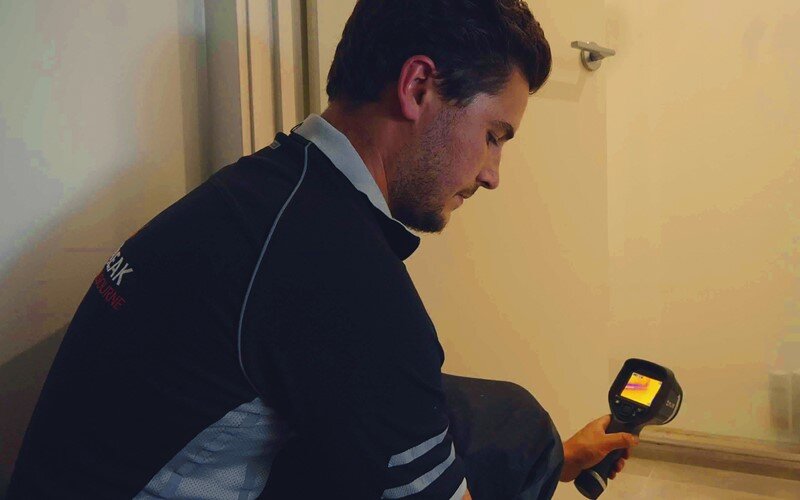6 Ways to Discover Surprise Water Leakages in Your Home
6 Ways to Discover Surprise Water Leakages in Your Home
Blog Article
We've stumbled upon the article pertaining to Top leak detection hacks listed below on the net and accepted it made perfect sense to talk about it with you on my blog.

Early detection of dripping water lines can mitigate a potential calamity. Some tiny water leakages might not be visible.
1. Check Out the Water Meter
Every home has a water meter. Examining it is a surefire way that aids you uncover leakages. For beginners, switch off all the water sources. Make sure nobody will flush, make use of the tap, shower, run the washing equipment or dish washer. From there, most likely to the meter and watch if it will certainly transform. Because no one is utilizing it, there need to be no movements. That shows a fast-moving leak if it moves. If you detect no changes, wait an hour or two and inspect back once more. This indicates you may have a slow-moving leak that can even be below ground.
2. Inspect Water Intake
If you find abrupt changes, despite your usage being the exact same, it implies that you have leakages in your plumbing system. An abrupt spike in your costs shows a fast-moving leakage.
Meanwhile, a constant rise on a monthly basis, even with the very same routines, reveals you have a slow-moving leak that's also gradually intensifying. Call a plumber to thoroughly examine your home, especially if you feel a cozy location on your floor with piping beneath.
3. Do a Food Coloring Examination
When it comes to water usage, 30% comes from toilets. If the color in some way infiltrates your dish during that time without flushing, there's a leakage in between the container as well as bowl.
4. Asses Outside Lines
Don't neglect to examine your exterior water lines too. Should water seep out of the connection, you have a loosened rubber gasket. One small leakage can lose tons of water as well as spike your water costs.
5. Examine and also Analyze the Scenario
Homeowners should make it a routine to inspect under the sink counters and also inside cupboards for any bad odor or mold and mildew growth. These two red flags indicate a leakage so timely interest is called for. Doing routine inspections, also bi-annually, can conserve you from a major issue.
Examine for stainings and also weakening as most devices as well as pipelines have a life expectancy. If you believe dripping water lines in your plumbing system, don't wait for it to escalate.
Early detection of leaking water lines can reduce a possible disaster. Some small water leaks may not be noticeable. Checking it is a guaranteed way that assists you uncover leakages. One tiny leakage can throw away lots of water as well as spike your water expense.
If you think leaking water lines in your plumbing system, do not wait for it to escalate.
WARNING SIGNS OF WATER LEAKAGE BEHIND THE WALL
PERSISTENT MUSTY ODORS
As water slowly drips from a leaky pipe inside the wall, flooring and sheetrock stay damp and develop an odor similar to wet cardboard. It generates a musty smell that can help you find hidden leaks.
MOLD IN UNUSUAL AREAS
Mold usually grows in wet areas like kitchens, baths and laundry rooms. If you spot the stuff on walls or baseboards in other rooms of the house, it’s a good indicator of undetected water leaks.
STAINS THAT GROW
When mold thrives around a leaky pipe, it sometimes takes hold on the inside surface of the affected wall. A growing stain on otherwise clean sheetrock is often your sign of a hidden plumbing problem.
PEELING OR BUBBLING WALLPAPER / PAINT
This clue is easy to miss in rooms that don’t get much use. When you see wallpaper separating along seams or paint bubbling or flaking off the wall, blame sheetrock that stays wet because of an undetected leak.
BUCKLED CEILINGS AND STAINED FLOORS
If ceilings or floors in bathrooms, kitchens or laundry areas develop structural problems, don’t rule out constant damp inside the walls. Wet sheetrock can affect adjacent framing, flooring and ceilings.
https://www.servicemasterbyzaba.com/blog/how-to-detect-water-leakage-in-walls/

We hope you enjoyed our post on Hacks to detect leaks. Thanks for taking a few minutes to read our article. Are you aware of someone else who is in to Hacks to detect leaks? Do not hesitate to promote it. Thanks for taking the time to read it.
Report this page